

Port jam likely to linger
Congestion at Port of Tauranga and beyond bought on by capacity limits, delays to expansion and a busy export season threaten the flow of goods out of Bay of Plenty over coming months.
By RICHARD RENNIE
David Ross CEO of Kotahi, the country’s largest supply chain company says it is not a lack of shipping capacity to New Zealand, but port capacity issues and low levels of labour availability across the supply chain impacting upon port operations.
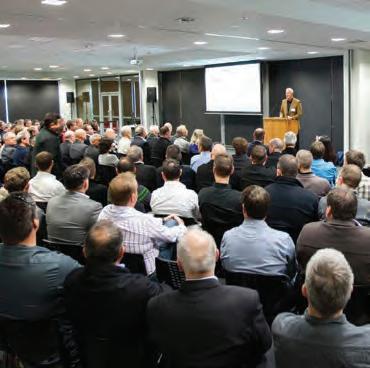
“In addition ports don’t currently have the extra capacity and flexibility to be able to absorb peaks and troughs in product demand or to manage external disruption such as the recent weather events. When you add these to a system at capacity, they tend to amplify the problem.”
He welcomed the work by ports across the country to bring back fixed
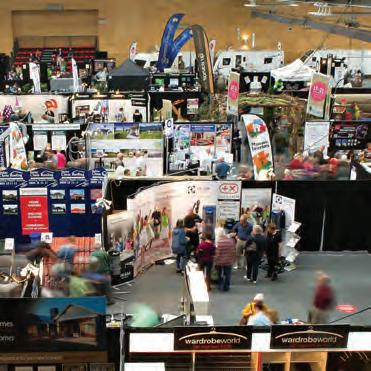
berthing windows for ship calls from March 6 to firm up scheduled arrival times.
“It is good to see Port of Tauranga doing well to date, as evidenced by the queues of waiting ships dropping to virtually zero. However, there is more work to do at a network system level.”
Ship numbers laid up awaiting
berthing have been at near record highs in recent months, with Vessel Finder reporting as many as 17 at anchor at any one time earlier this year.
Port reliability in New Zealand has been firmly in the spotlight, with Maersk’s head of Oceania Region recently reporting the region’s schedule reliability at 39%, lagging behind the rest of the world at 53%.
But Ross said Kotahi’s data indicated that reliability was even lower for New Zealand at only 15%.
He expected the return to fixed berth scheduling would also bring a level of disruption in the short term, meaning tough decisions from carriers to omit ports or skip sailings.
Continued on page 3

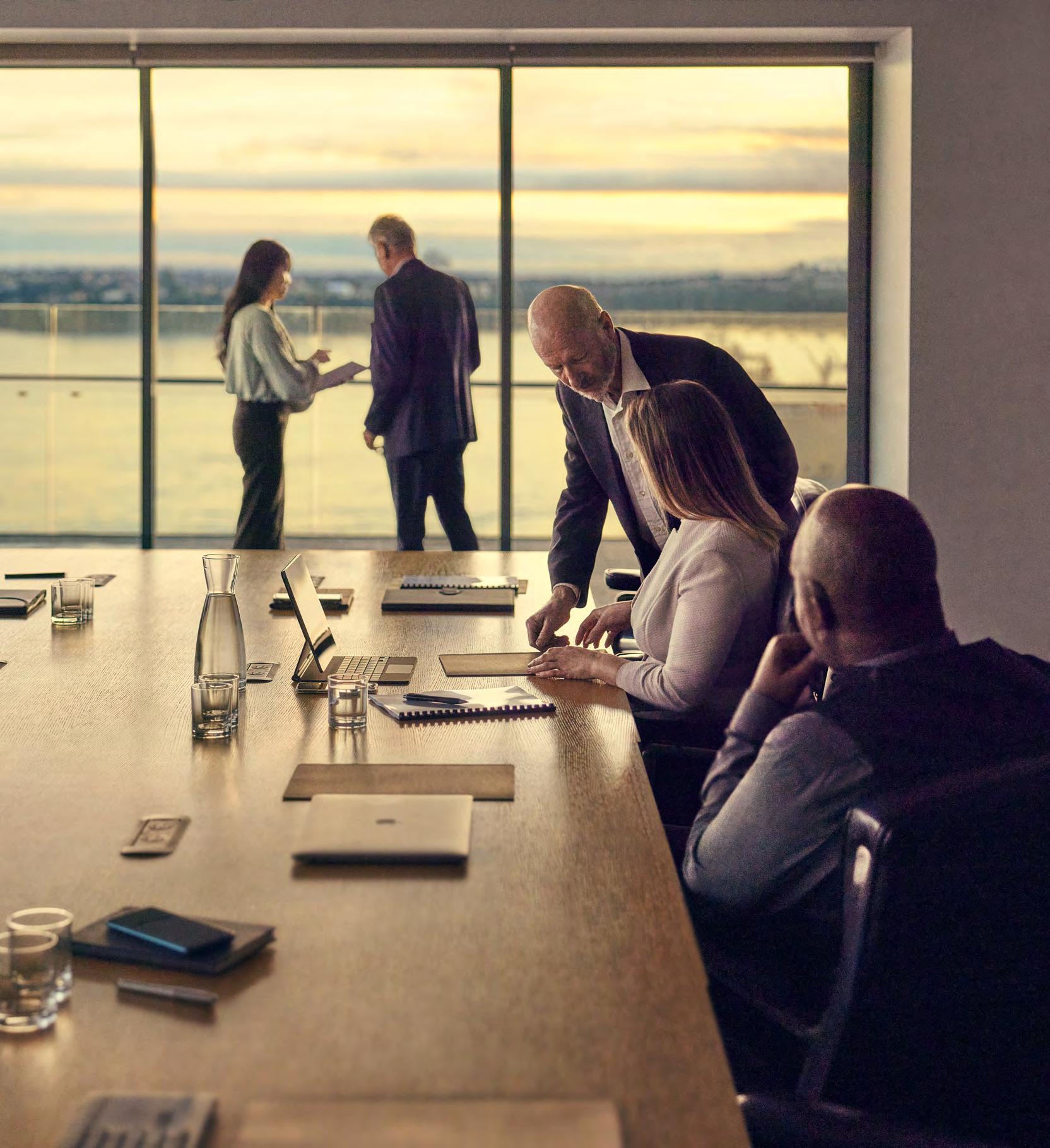
Port jam likely to linger
“We are seeing this at the moment.”
A Port of Tauranga (PoT) spokesperson confirmed the port has been grappling with delays and reduced productivity since October 2020 when it was forced to abandon berthing windows in Covid’s wake and the disruption that accompanied it.
“Vessel arrival times at Tauranga have been extremely irregular since, and with larger-than-normal cargo exchanges per visit. This has led to a cycle of long wait times at anchor, extremely high container yard congestion, reduced productivity, and longer-than-usual processing time for vessels alongside.
“We have been bringing in vessels in the order in which they arrive, but the situation has clearly been unsustainable for all involved – for the congested terminal, for shipping lines incurring costs at anchor and congestion surcharges, and for importers and exporters experiencing cargo delays.”
Last July PoT had reported about 40% schedule reliability, having slipped from a relatively good postcovid position of 50%. Auckland, Napier and Lyttleton all recorded levels even lower.
But Ross said the improvement back then had been driven by the offpeak export season.
“Now as demand has come on for a number of primary industry export products it has created increased pressure and challenges for the New Zealand supply chain.”
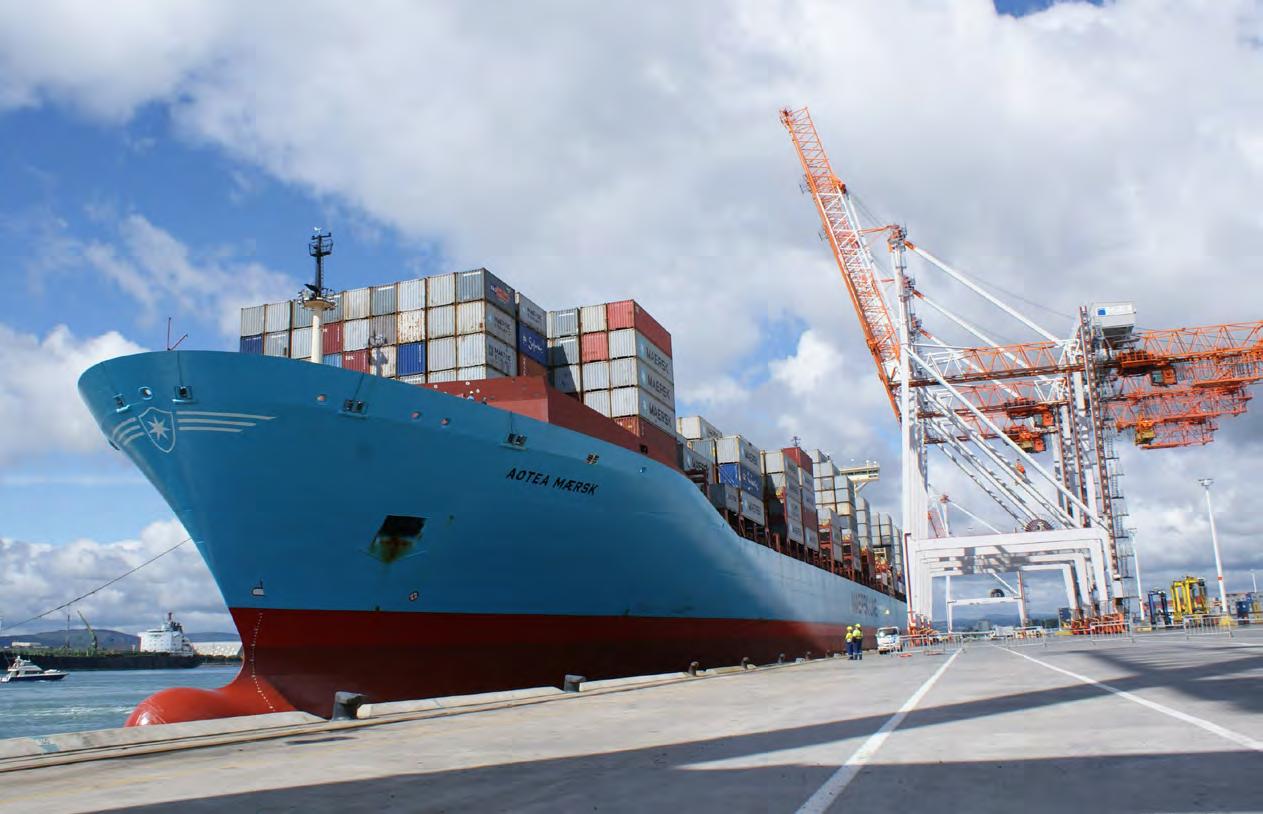
Ken Harris, managing director of ContainerCo NZ said the level of congestion at the port meant getting containers in and out was tough now, and only likely to be even tougher next year when kiwifruit exports were predicted to increase significantly.
“Our facilities are overloaded with containers, making it difficult for importers to return containers and shipping companies are charging
demurrage on delayed returns.”
He echoed concerns held by many in the supply chain sector that the time taken to expand capacity at PoT was simply too long, with capacity maxing out.
One freight forwarder said the planned expansion of PoT through Sulphur Point was a classic example of a “shovel ready” project touted by government during Covid that was to
be fast tracked.
However over two years on it remains bogged down in Environment Court hearings.
The project intends to dredge 1.5 million cubic metres of harbour bed, of which half already has consent.
PoT is also wanting to build 385m of berth facilities at Sulphur Point and reclaim 1.8ha of land, and construct berths along the existing tanker berth.
“We are doing our best to manage demand and increase capacity, including applying for resource consent to extend the Sulphur Point wharves to accommodate more frequent and larger container vessels,” said the PoT spokesperson.
The port is expected to run out of container terminal capacity in two years should the planned expansion not go ahead.
CONTACT INFORMATION
PUBLISHER
Alan Neben, Ph: 021 733 536
Email: alan@bopbusinessnews.co.nz
EDITORIAL
Alan Neben, Ph: 021 733 536
Email: editor@bopbusinessnews.co.nz
PRODUCTION – Copy/Proofs/Graphic Design
Times Media – Clare McGillivray
Email: clare@times.co.nz
ADVERTISING
Pete Wales, Mob: 022 495 9248
Email: pete@bopbusinessnews.co.nz
ELECTRONIC FORWARDING
EDITORIAL: News releases/Photos/Letters: editor@bopbusinessnews.co.nz
GENERAL INQUIRIES: info@bopbusinessnews.co.nz
Bay of Plenty Business News has a circulation of 8000, distributed throughout Bay of Plenty between Waihi and Opotiki including Rotorua and Taupo, and to a subscription base. www.bopbusinessnews.co.nz
Bay of Plenty Business Publications
309/424 Maunganui Rd, Mt Maunganui, 3116 Bay of Plenty Business Publications specialises in business publishing, advertising, design, print and electronic media services.
THE PORTER REPORT
Teach your children well
It’s important that our young people’s education performance has been front and centre of the news over the past month. As I write, it remains to be seen what action, if any, the Labour government will take to address the many education failings cited by our primary and secondary school teachers when they went on a one-day nationwide strike.
We can perhaps be forgiven for suspecting that the teachers have begun to realise that the current government is by no means a shoo-in to get back into power. It is clear that as well as seeking redress for their genuine issues, teachers were laying down a marker to keep the current government’s attention focused on their needs and remind Labour of their voting power.
I do not in any way suggest they should not do so. In my view, nothing is more important to the country as whole, and the business community in particular, than the need for a well-educated, well-focused, and literate cohort emerging into the workforce.
that, even now when schooling is returning to something approaching normal, education is losing its appeal for many young people.
It is evident that the expanding sprawl of social media has had some impact on increasing educational distraction. But that is a global issue and not the only reason. According to recent news reports, truancy numbers are going up and are now thought to be around 40 percent. Schools are struggling to keep track of absent students.
More “truant officers”
many truancy officers are currently in schools. Apparently, the government doesn’t keep that data.
However, the government recently announced that it was pouring $74 million into a truancy package, creating 82 “attendance officer” – formerly “truant officer” - roles.
It is difficult to imagine that this latest injection of funds will have much impact on the problem.
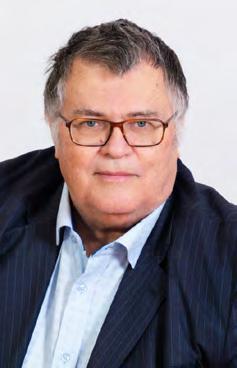
posedly critical policies to the “too hard and expensive” basket, in his bid to win Labour another election.

In case you missed last month’s edition Scan to subscribe

Sadly, as best we can tell that has not been happening. Nor is it likely the recent strike will make much difference. Leaving to one side the vicissitudes of Covid 19 - which cost some lost school time - what is a major long-term concern is the large number of children who are simply not being educated. The reason being
Education Department data reports that New Zealand has around 2,500 schools, the majority of which are state and state-integrated, funded by the Government. It is important to note that funding for “truant” officers is a discretionary decision that essentially comes out of individual school budgets. And according to a recent Parliamentary question time answer, the government just doesn’t actually know how
New Education Minister Jan Tinetti suggested the support would make a difference in attendance rates. According to Tinetti, a former Tauranga school principal, attendance began to decline in 2015, but Covid had made the problem worse.
Tinetti replaced the current Labour Prime Minister in the education role. Chris Hipkins’ own tenure as minister included supervision of the much-criticised attempt to gather the country’s polytechnic institutes into one national organisation. In his latest incarnation he has basically relegated Labour’s former sup-
By 2026, the Ministry wants to increase the number of children attending regularly - defined as over 90 per cent of the term, or on average more than nine days a fortnight - to 75 per cent.
As respected independent economist Cameron Bagrie noted in a recent news report: “If you’re looking at [school] achievement or attendance, you’re going to be really worried about where New Zealand is going to be in 30 years.”
According to Tinetti, the government is “going back to basics on attendance”. To which one can only ask, why did it take you all so long?

David Porter
NZ’s largest mass timber office building coming to town
The crane has arrived, and piling is underway –visible signs of progress in Tauranga’s city centre on what’s set to become the country’s largest mass timber office building.
The future home of Tauranga City Council’s administration staff at 90 Devonport Road is being constructed by property development and investment company Willis Bond with construction partner LT McGuinness, in collaboration with architects Warren and Mahoney, Council, and mana whenua. Once complete, Council will lease the building from Willis Bond.
The building is leading the way in environmentally sustainable design and in addition to the use of mass timber, will feature rainwater harvesting, electric vehicle charging, and facilities that encourage active transport options.
Using engineered timber in place of more traditional concrete and steel elements will reduce embodied carbon – carbon emitted through the manufacturing, transportation, and installation of building materials and components – to its lowest possible point.
At a recent ground-breaking ceremony on site, Commissioner Bill Wasley credited the collective efforts of everyone involved in reaching this exciting milestone.
“We’ve teamed up with some of the best in the business to lead the
way in the sustainable and innovative design of this building, so we can all look forward to see it taking shape over the next two years,” says Bill.
“After years of indecision, it’s great to see these visible signs of progress being made so our community can feel confident that we’re delivering on our commitment to transforming our city centre in a way that supports environmental sustainability and revitalises downtown Tauranga.”
“It’s also a nod of confidence for council’s administration staff who’ve been waiting to be back under the same roof since 2014 when they had to vacate their previous home on Willow Street.”
Willis Bond Managing Director – Funds and Finance, Wayne Silver, says Willis Bond is committed to continuing to evolve how they develop projects to ensure they’re walking with a light carbon footprint. “The incorporation of mass timber building components is going to become a fundamental part of our development toolkit for constructing environmentally sustainable and exceptional buildings, both now and in the future,” says Wayne.
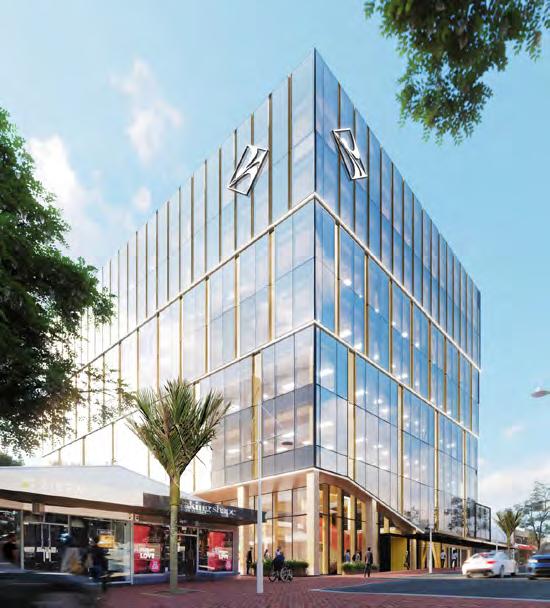
“At over 10,000 square metres, 90 Devonport Road will be the largest mass timber office building ever built in New Zealand and will set a new standard for projects of scale that can be delivered with this environmentally sustainable methodology. That it will become an integral part of Tauranga’s city centre and serve the council and the community of Tauranga for
years to come, is a very exciting prospect.”
The building is targeting the highest 6 Green Star – Design and As-Built NZv1.0 – Design Review Rating, demonstrating world leadership in sustainability. It also has a strong emphasis on mātauranga Māori (Māori knowledge systems) and connection with the surrounding natural environment.
Seeka, Perfectly Imperfect and Island Gelato collaborate to reduce food waste
New Zealand produce company Seeka has taken another step forward in its bid to minimise food waste, partnering with Perfectly Imperfect to rejuvenate cherry export rejects.
Seeka’s New Zealand based wholesale market and distribution services, SeekaFresh, were able to work with Perfectly Imperfect’s founder, Wendy Zhou and her team, to save over half a tonne of cherries deemed both export and local market rejects.
Aaron Leslie, New Zealand Markets Manager for SeekaFresh said, “Waste is something we are always trying to minimise at Seeka. By collaborating with
Wendy, we were able to access her connections at DryNZ, and Island Gelato, which has resulted in our cherries being destoned and turned into a new flavour of gelato. We couldn’t be happier to see the product redistributed to market in this way.”
Perfectly Imperfect is a social enterprise whose purpose is to save ‘ugly’ food from going to waste. Founder, Wendy Zhou, reached out to SeekaFresh in Jan-

uary looking for opportunities to repurpose any produce unfit for export or the local market. Wendy Zhou explained,
“A staggering 45% of fresh produce is not distributed to market, simply because it doesn’t look a certain way. It’s our aim to reduce this and repurpose the food. We were very happy to work with
Seeka and look forward to a continued relationship.”
Island Gelato was also pleased with the outcome with their latest flavour, Cherry Bomb, quickly proving to be a firm favourite with locals.
Aaron stated, “Depending on varying factors such as logistics issues etc. we can end up with fruit that needs to be distributed and consumed quickly. This makes the produce unfit for export and occasionally local distribution too. Being able to work with Perfectly Imperfect, in these unusual cases, will mean the fruit can be used quickly and isn’t wasted, which is a fantastic outcome for all parties involved.”


Publisher challenges readers: ‘count them!’
In March Bay of Plenty Business News published its new annual magazine 100 People
“It was really an idea that came from our readers,” says publisher Alan Neben. “Our annual Year Book has been very successful – last year featuring a record number of businesses.
“But a message came back to us last year loud and clear from Year Book readers: ‘We love hearing about the best businesses in the Bay, but we’d really like to hear more about their people; their back-stories and their philosophies; we’d like to know more about where they come from and what motivates them.’
” We listened, and so 100 People was born.
“As publisher, I immediately became anxious: ‘Will we be able to find 100 suitable people to profile?’ ” Thankfully, the answer came quickly, and the question soon changed from, “Can we find 100 people?” to, “Who will we have to leave off the 100 list?”
The result is the new magazine and e-zine – 100 PEOPLE BEHIND BAY BUSINESS
In the introduc tion I challenged our readers, saying, “yes, there are defi nitely 100 individuals featured in this issue … you’re welcome to count them.”
… so feel free.

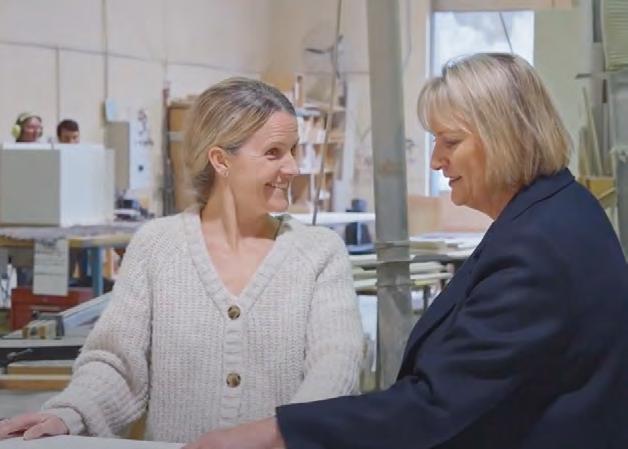


Putting sustainability talk into action – participants and supporters gather tolaunchTheGreenRoominŌhope.
Bay of Plenty
COASTAL VISITOR SECTOR COMMITS TO GREENER PRACTICES
Tourism Bay of Plenty has launched the first Eastern Bay of Plenty intake of its free 12-week programme, The Green Room | Te Rūma Kākāriki, in Ōhope. Eighteen businesses and organisations are taking part in the cohort.
The part-time programme takes a holistic approach to sustainability, incorporating economic, visitor, community, and environmental actions. It includes topics such as carbon footprint measurements and practical steps that can be taken to reduce waste and carbon.
Whakatāne District Council deputy mayor Lesley Immink, Tourism Bay of Plenty general manager Oscar Nathan, and Tourism Industry Aotearoa sustainability advocate Gisela Purcell were key speakers at the March launch event, which was
followed by a workshop for programme participants.
Tourism Bay of Plenty head of strategy and insights, Stacey Linton, says the launch was particularly timely given the recent unseasonable weather in the North Island, which dramatically highlighted the realities of climate change.
The Green Room was first launched in Waihī Beach in May last year, and 28 Coastal Bay of Plenty visitor sector businesses and organisations have since graduated from the programme. Stacey says the aim is to
have 100 graduates from across the region within two years.
“Consumer values are changing as people become more conscious of climate change and the impact of their actions. Locals and visitors are wanting to support businesses and destinations that leave a light footprint or, better yet, give back. This was an emerging market pre-Covid, and it’s growing,” she says.
“According to Expedia, 90 per cent of consumers are looking for sustainable options while travelling. Half said they would pay more for
transportation, activities, and accommodation if the option was more sustainable.”
The Green Room is managed by Tourism Bay of Plenty, delivered by Tourism Industry Aotearoa (TIA), and funded by Toi Moana Bay of Plenty Regional Council. Whakatāne District Council is also supporting this particular cohort.
Further information about
The Green Room is available at: bayofplentynz.com/sustainability-andregeneration/the-green-room-teruma-kakariki/
Whakatāne region participants – cohort launch 15 March 2023
VMAC Rides, KG Kayaks, Motu River Jet, Moutohorā: Island Sanctuary, Ngāti Awa Tourism, Omataroa Eco Trust, Mata Beer, Aotearoa Breweries, Ōhope Beach Golf Links, Air Chathams, Wild Food Challenge (WDC), The Good Tonic, Ohope Beach Top 10 Holiday Park, Ōhope Beach Motel, ProSail, Whakatane Golf Club, Whakatāne Holiday Park, Awakeri Rail Adventures, Tasman Holiday Parks, Ohiwa Beach.
The mode shift challenge
Government and local government agencies and private sector organisations around the world are working hard to reduce their carbon emissions – well at least the responsible ones are.
engineers | surveyors | planners
engineers
|
surveyors
|
planners
By ANNE TOLLEY, Tauranga Commission Chair
Tless cars on the road;

Proudly supporting the Bay of Plenty community since 1940.
Proudly supporting the Bay of Plenty community since 1940. Specialising in:
| surveyors | planners
Proudly supporting the Bay of Plenty community since 1940.
Specialising in:
• Subdivision, Land Use & development advice
Specialising in:
Subdivision, Land Use & development lifestyle & residential subdivision
• Rural, lifestyle & residential subdivision
the Bay of Plenty community since 1940.
• Boundary adjustments
• Subdivision, land use & development advice
Specialising in:
• Drone Surveys
Boundary adjustments
Surveys
he reason is obvious to almost all, the exceptions being the diminishing number of naysayers who have yet to accept that human-induced impacts on climate represent a real threat to our planet; and those who simply don’t care enough to take notice.
• And we want to make it as safe and easy as possible for people to use active transport modes like cycling, scootering and walking.
• Freshwater management consents & policy advice
• Freshwater management consents & policy advice
• Rural, lifestyle & residential subdivision
• Boundary adjustments
• Drone surveys
1180 Amohia Street, Rotorua 3010
need to provide facilities for people to shower and change after they’ve ridden, run or walked to work. Or perhaps we need to provide places for people to lock-up and recharge their bikes during the day.
• Culvert Design & Applications
• 3D Laser Scanning
• Culvert Design & Applications
New Zealand is committed to being ‘carbon zero’ by 2050 and even with the offsets provided by growing forests, that’s a big ask.
In part, our parking strategy also aims to contribute to mode shift. We obviously want people to be able to park in our key commercial areas when they need to, but the parking activity also needs to be a good fit for the low-carbon world of the future.
• Nutrient management advice
• 3D Laser Scanning
• Nutrient management advice
• Nutrient management advice development
• Freshwater management consents & policy advice
• Freshwater management consents & policy advice
• Culvert design & applications
• Culvert Design & Applications
• 3D laser scanning
• 3D Laser Scanning
• Nutrient management advice
1180
Ph:
Tauranga City Council is working on a number of fronts to reduce its carbon footprint, and that of the city. As it stands, most of the city’s carbon emissions come from transport activities and most of the transport emissions come from private vehicles. In brief, our major focuses are:
• We want to have a more efficient transport network, so people can get where they need to go and spend as little time as possible sitting in queues with their engines running;
• We want more people to use public transport, so there are
Businesses have a key role to play too, both in addressing the carbon emissions their activities generate, and by helping their employees to shift away from using private transport to get to and from work. That might mean setting up a ride-sharing arrangement; or encouraging the use of public transport or the take-up of e-vehicles and e-bikes; or, where it’s possible, encouraging people to work at home at least some of the time.
So here’s a challenge to shift our mind-set about the way we get around the city. Maybe there are some financial incentives a forward-thinking business could use to encourage change. For example, we may
Tauranga City Council is investing in the latter two items as part of the development of our future leased administration building at 90 Devonport Road. The council has also introduced loan schemes to help staff who want to purchase e-bikes get over the initial financial barrier, and is providing bus passes to staff for their work commute, to encourage the use of public transport. Many of our staff work at home for some of the week, which also requires an investment in connectivity and online meeting capability.
All of these things are imminently achievable and they allow us to get ahead of the carbon reduction game. Except it’s not a game – it’s a necessity and the sooner we start, the better the outcomes will be for us as individuals, organisations, communities and countries. Challenge issued!
AnneTolley
Photo/Tourism
Lexus unveils the all-new RZ450e Electric SUV
AUTOMOTIVE REVIEW
By MITCH HANDCOCK, LEXUS OF TAURANGA
The automotive industry is undergoing a significant transformation with the rise of electric vehicles (BEVs), and one of the latest offerings to hit the market is the Lexus RZ450e BEV.
As an all-new electric SUV, the RZ450e is a welcome addition to the Lexus EV line-up, boasting impressive world first features such as a steer-by-wire “yoke” steering wheel.
Recently, I had the opportunity to fly to Melbourne to view the RZ450e in person before its release in New Zealand. With a passion for vehicles, I was excited to see how Lexus had incorporated their signature style and design into this all-new model.
Seeing the RZ450e in person, I was impressed by its sleek appearance. The vehicle features a low and wide stance, giving it a strong and powerful look. The front grille is unique even for Lexus as the brand
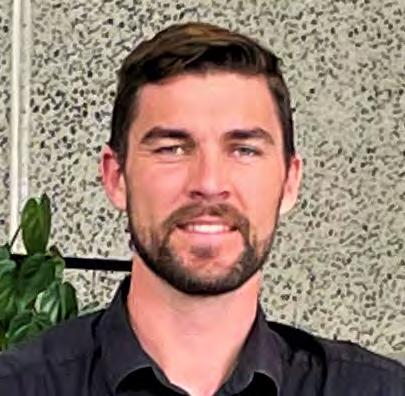
makes the transition from the “spindle grille” to the “spindle body”. While the bold styling is unapologetic, the strong character lines flow and create a head turning appearance.
The RZ450e is powered by a lithium-ion battery connected to two electric motors, delivering up to 230kW of power. With a full charge, the vehicle can travel up to 470kms on a single charge (NEDC), making it a practical option for long trips. Fast charging is a breeze as well, with 150kW DC charging possible. And yes, it can tow up to 750kg. The interior of the RZ450e is just as impressive as its

exterior, with a spacious and modern cabin that offers plenty of room for passengers and cargo.
The vehicle features a 14” touchscreen display that houses the infotainment system, which is intuitive and easy to use. The instrument cluster is also digital, providing drivers with all the information they need in a clear and concise manner.
Another feature that stood out to me was the vehicle’s safety systems. The RZ450e comes equipped with a new iteration of Lexus Safety System+, including automatic emergency braking with motorcycle detection,
Good for the environment, good for the business:
Brother New Zealand’s new solar panel installation prevents 11 tonnes of emissions
Brother New Zealand has marked a significant achievement in its ongoing commitment to sustainability – installing a 76.44kW solar energy system consisting of 168 x 455 watt solar panels at its Tauranga-based warehouse and offices.
The technology company expects to reduce energy emissions at the site by 43.5 percent as it makes the most of the Bay of Plenty’s high ranking sunshine hours and growing options for commercial solar powered systems to generate over 90,000 kilowatt hours a year, emissions-free, on its roof.
The 6,656 square meter building in Tauriko houses Brother’s printing, labelling, sewing and craft products and 45-strong workforce.
Brother New Zealand managing director Warwick Beban says the initiative is both good for the environment and good for the business.
“Brother takes its commitment to sustainability seriously. We continuously assess and seek to minimise our environmental impact so we can keep manufacturing the products that support homes and businesses in a sustainable way.
“It feels good to see this idea come to fruition. Knowing that a good portion of the electricity we use comes from clean, renewable energy that we generate ourselves helps
us extend that commitment further into our business operations,” says Beban.
Brother worked with award-winning solar energy company, SuperPower, to develop an installation that maximised the yield and environmental benefits of the investment. System modelling provided by SuperPower shows that the clean electricity generated by the system is equivalent to 11 tonnes of avoided CO 2 emissions per year. That’s the same as more than 963,000 car kilometres avoided or planting 1,966 trees over the 25-year system lifetime.
Even during rainy or overcast conditions, the system is able to generate at up to 50 percent of its max output.
The initiative supports New Zealand’s broader need for more renewable electricity to meet carbon emissions targets. Excess power generated at peak times will be supplied back to the grid, where it can be accessed by other power users.
Beban says he is pleased with the expected environmental benefit and encourages
other industrial users to consider their own renewable generation, noting its advantages for both the environment and the bottom line.
“After weighing the options, we decided on a greater initial investment that provided system sizing customised to Brother’s usage requirements and patterns and maximised the annual yield for our roof space. A structural feasibility assessment was required, but we’ve ended up with a system that’s fit for purpose and will see our initial investment recouped in just over seven years based on forecast electricity savings.”
Beban says that over the system lifetime, Brother stands to recoup its initial investment more than three times over.
Brother’s wider commitment to achieving carbon neutrality and reducing landfill waste extends across the lifecycle of its products, from green procurement to product recycling. Brother has held Toitū net carbonzero certification since 2013, which recognises their continued efforts to manage, reduce and offset carbon emissions.
adaptive cruise control, panoramic camera, and blind-spot monitoring amongst many other features. These features help to make the RZ450e a safe and reliable vehicle for drivers and passengers alike. Overall, my experience seeing the Lexus RZ450e in person was truly memorable as it represents a significant step forward for Lexus, showcasing the potential of the brand’s future electric vehicles. With its impressive range, performance, and safety features, the RZ450e will be a great option for anyone looking to make the switch to an electric vehicle.
As the world continues to shift towards more sustainable forms of transportation, the Lexus RZ450e is a prime example of how Lexus is rising to the challenge.
If you’re curious to learn more about the all-new Lexus RZ450e, please reach out to the Lexus of Tauranga team. Be the first to experience the RZ450e for yourself, our demonstrator model is expected to arrive at our dealership in April, so register your interest today!
Visit Mitchell at Lexus of Tauranga at 158 Elizabeth Street, Tauranga – or call him on 07 577 0880.
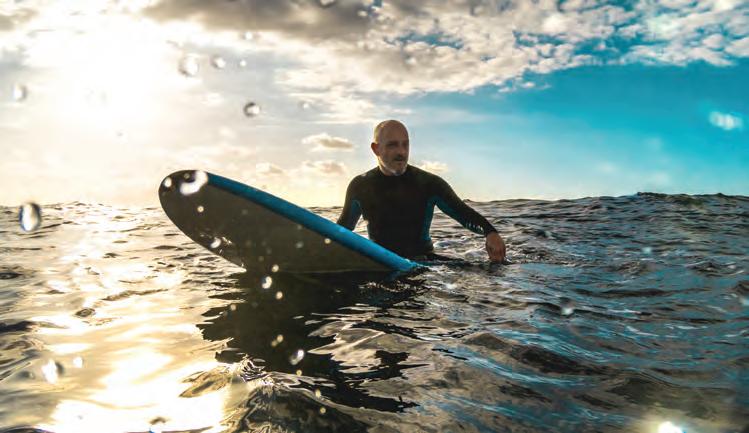
If you’re contemplating a change of career, why not consider owning your own franchise business?
With direct access to over 30 well-known franchise brands in locations all around the country, it’s quite likely we have the business opportunity that perfectly fits your lifestyle.
Iridium Partners help potential franchisees research, evaluate and navigate the franchise industry to find the perfect opportunity for you. Contact us today and get some balance back in your life.
Call Meredith on +64 21 209 9496 info@iridium.net.nz www.iridium.net.nz
Mitch Handcock
Doubling the intake of nursing students at Waikato for 2023
The University of Waikato has welcomed a record 211 new students into its Registered Nursing programmes for 2023, more than doubling the intake from 2022.
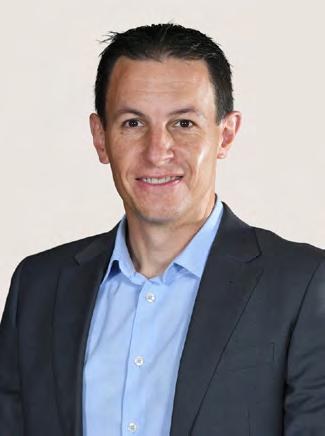
Acting Dean of Te Huataki Waiora School of Health Dr Jo Lane, says the increase in numbers is encouraging in the face of severe staff shortages in the health workforce.
“We’re really pleased to welcome so many high-quality nursing students to study. At a time when the health workforce is in crisis, it’s imperative that we do everything possible to enable students wanting to enrol in health training to do so.”
The University of Waikato is the newest provider of Nursing programmes, developing and delivering these in partnership with Te Whatu Ora Waikato, with an emphasis on equity, mental health and addictions, and Māori and Pacific health.
It offers two programmes that lead to becoming a Registered Nurse, a traditional three-year Bachelor of Nursing degree, and an accelerated graduate-entry Master of Nursing Practice degree. The latter allows students with a previous degree in any subject to complete their Nursing training in just two years and be work-force ready.
“Graduate-entry is a really common model overseas for professional healthcare programmes that is starting to become established in Aotearoa. However, we’ve been just blown away by the demand for our graduate-entry Nursing programme, which is already the largest in the country. I’m so proud of what our Nursing team has been able to achieve so far.”
“We have nearly 70 students starting this year who are wanting to change careers to become Nurses. That is just so encouraging, particularly given the rich life experiences that they will bring to the profession. I can’t wait to see them graduate and enter the workforce at the end of next year.”
Dr Lane says graduate-entry programmes are not only a faster way to address health workforce pressures but are also a more cost-effective pathway that does not compromise the quality of training.
“It’s an accelerated programme, so graduates still meet the same Nursing Council standards and in fact complete 300 more clinical placement hours than required to ensure they are work-ready. However, the cost for both students and the Government is around 25% less than a three-year Bachelor of Nursing degree.”
“Given the success of graduate-entry health programmes in other countries, including Australia, I would love to see the Government explore this model further in areas where there are other critical workforce shortages, including medicine and midwifery.”
Locally-made app tops New Zealand App Store charts
Tech entrepreneur Steph Kennard has launched a free app that in just three weeks has topped the New Zealand app charts beating out Google to gain the coveted number one spot.
Bonnet is a free, easy-to-use app that solves a major problem for New Zealand drivers by centralising vehicle administration. In two weeks, the app has been downloaded over 10,000 times and 21,700 cars have been loaded onto the app.
In a New Zealand first, Bonnet users can keep track of WOF, regos, paid Road User Charges (RUCs) mileage, service dates, and warranties for all their vehicles, from a single car to a family load or fleet, eliminating the stress of a surprise fine or overdue services.
“Over 10,000 downloads in just a few weeks have smashed all our expectations. Already, some users have found that they are mistakenly overdue on their diesel mileage, and fleet owners are thrilled to have a centralised point to manage their vehicles,” says app founder Steph Kennard.
270 service centres across New Zealand are now on the Bonnet app to create a more seamless booking and record system for their customers. The app uses a simple booking system that works within service centres’ existing websites, making it easier than ever for customers to book in services the moment they are due.
“We found that many local ser-
vice centres were still using manual booking systems and with Bonnet we’ve made it easy and cost effective to create an online booking system that customers have come to expect these days without the need for an expensive system upgrade,” Steph continues.
Six years in the making, Steph says she saw a clear gap in the market after working in the vehicle industry for many years.
“Vehicle admin can be a nightmare for families and fleet owners, it’s easy to lose track of when your registration or service is due leading to unnecessary fines or repairs. Especially when you’re trying to manage multiple vehicles,” says Steph.
The Kiwi app is free and easy to use, requiring users to simply enter their number plate to access all relevant information. Bonnet ensures that all data pulled into the app is accurate, giving users peace of mind knowing that they have reliable information about their vehicles.
“I work in the tech industry and have worked with a lot of car brands throughout my career. I saw an opportunity to solve a problem that effects a huge number of New Zealanders through a seamless app solution,” explains Steph.

Bonnet also recognises when a vehicle is a diesel car and automatically shows the driver’s paid RUC balance with the NZTA. This feature makes it easy for drivers to stay out of the fines’ way and avoid any unnecessary costs. Users will soon be able to load their service history into the app, eliminating the need for a physical glove box book and making it easier to sell their car with a transferable profile.
Bonnet has ambitious plans, including adding COF (heavy
vehicles), toll payments, fines, and even insurance to the app. The app also aims to load all service centres in New Zealand, making it even easier for users to book appointments and keep track of their vehicle’s maintenance. “The goal is to become a one-stop-shop tool for all Kiwis’ vehicle administration needs,” says Steph. Download Bonnet for free now via the Apple App Store or Google Play Store and experience hasslefree vehicle administration.
Making the most of your Microsoft 365 subscription

ITECH TALK
> BY YVONNE BLANCH
Yvonne Blanch is an Account Manager at Stratus Blue. She can be contacted at yvonne@stratusblue.co.nz
’m going to say it as it is. If you’re operating a business, no matter what size, you should not be using any version of Microsoft Office with a number other than 365.
You should also not be using a Personal Home or Family version of Microsoft 365. There are multiple versions of Microsoft 365 for Business available and one of them or a mix of them is going to be perfect for your business.
Subscribing to Microsoft 365 is going to assure you of a constantly improving, up-to-date, secure and growing suite of applications that can enhance productivity and even reduce your costs.
So, before you zoom out, monkey around or slack about and spend your money on expensive applications to fit a specific need and then pay more (in time or money) to integrate them into your existing Microsoft 365 environment, check out what you already have.
For businesses in today’s office-optional world Microsoft
Teams has been a game changer. Hopefully we’re all into creating channels for projects and departmental groups, setting meetings, collaborating on files, talking, videoing and chatting.
But wait there’s more!
Check out the apps that can be integrated into your Teams’ channels by clicking on the apps icon on the left hand side toolbar – there are a few hundred of them!
There are integrations with applications you may already use such as Adobe Acrobat and Salesforce. Some of the extra Microsoft apps are also available as standalone apps independent of Teams. Sign in to office.com with your Microsoft sign in details and have a look at these four apps – available at no extra cost!
• Bookings – a very customisable bookings app that integrates with Outlook. Beat the backwards and forwards battle of looking for a suitable time, and send a Bookings link so your client can book their own appointment that fits your

























schedule. If you’ve discounted Bookings in the past (as I did), please check it out again – it has improved hugely.
• Whiteboard – ditch the markers and mess and work online with useful templates for brainstorming, problem solving, project planning and more. Very good on Teams.
• Forms – online survey creator, there are so many creative ways



to use this app.
• Planner – a project management tool providing collaborative task management and task scheduling for teams. Create Kanban boards with great visual status charts and more. To become your business’ resident expert, acquaint yourself with the fantastic training resources that Microsoft publish at learn.microsoft.com.
Steph Kennard, Bonnet app founder
Dr Jo Lane
A home for sporting spectacles

Large sports events such as the Zespri AIMS Games and New Zealand Festival of Squash bring excitement, entertainment, joy, pride, and inspiration to the communities of Tauranga. Not to mention a decent dose of healthy competition and all the passion that comes with that. These sporting events also bring economic benefits to our city.
The clock is winding down in the final quarter and there are only two points in it.
Legendary Kiwi sporting couple Jeff and Adine Wilson are on their feet courtside, anxiously glancing at the clock while encouraging their team to hold on just a little longer.
The ball travels from one end to the other, and back again. The players are desperate. So are their supporters in the grandstands.
The final buzzer sounds and the unbearable tension inside Baypark Arena is immediately replaced with a wall of noise and celebration.
The Wilson coaching duo is ecstatic. The former All Black runs onto the court and embraces the team.
It’s a celebration worthy of a Netball World Cup final, or a Rugby World Cup final.
The emotion on the faces of the young intermediate-age basketball players (and their two famous coaches) is exactly the same as you would see on TV.
They are now AIMS Games champions – and that means a lot to young sportspeople in New Zealand.
Each year, thousands of athletes from all around the country, and sometimes even from overseas, travel to Tauranga in search of the ultimate AIMS experience.
It is the biggest week of the year for the city. The Zespri AIMS Games is one of the largest sporting competitions in the Southern Hemisphere.
Last year there were more than 10,000 athletes from 320 schools taking part in 23 sports – many of them held at Bay Venues facilities.
Of course, teachers, parents, and
other family members also travel with the athletes and pack out the grandstands to cheer them on.
As well as all the positive energy and atmosphere that brings to Tauranga over the course of a week in September, there are obvious economic benefits for the city and wider region.

Accommodation providers, hospitality, retail – they all get a boost.
Tauranga City Council commissioned an economic and social impact report following the 2019 AIMS Games and found that the event contributed 74,787 visitor nights to the region and injected nearly $6.2 million into the Tauranga economy.
More recently Tauranga City Council commissioned a post-event evaluation for the 2022 New Zealand Festival of Squash – the biggest squash tournament ever held in Aotearoa – that showed a visitor spend of $621,450.
There were 4,273 visitor nights generated by the international squash event, which was held at Baypark Arena with all the action taking place inside an eye-catching, purpose-built glass court, surrounded by stadium seating, with a party zone and free fan zone also on offer.
“These huge, high-profile sporting events bring so much energy and life to our facilities and we just love hosting them,” Bay Venues chief executive Chad Hooker said.
“There is also a certain pride in local sportspeople, as well as local sports administrators and fans, in being able to take part and watch
these events in their own city. Sport has the ability to create magic moments and lasting memories and to have our venues associated with those moments and memories is always special.”
Hooker said the economic and business benefits of hosting large sporting events is just one reason among many to keep improving and developing Tauranga’s sport and recreation facilities and shared community spaces.
“We want to create high quality facilities for our own local athletes and community clubs and teams to use on a day-to-day basis, and we also want to host as many of these big national and international tournaments and events as possible to attract visitors and become a destination city for sport,” he said.
“We are always looking for the next big sporting spectacle and our 2023 calendar is quickly filling up with some exciting events.”
With the New Zealand Festival of Squash set to return in December, Polo in the Bay in November, the Volleyball NZ Club Championships and HoopNation in October, Zespri AIMS Games in September, Battle in the Bay national cheerleading competition in August, the New Zealand Gymnastics Championships in July,


more basketball and volleyball tournaments in June, and the Fight the Fight charity boxing event in May, there is plenty to look forward to as the year progresses.
Coming up just this month at Baypark Arena is the Mel Young Easter Classic 2023 basketball tournament, as well as ANZ Premiership netball –with the Avis Waikato Bay of Plenty Magic taking on the Trident Homes Tactix.
At each of these sporting events, magic moments will occur and lasting memories will be made.
Just like on that Friday afternoon in September last year when the final buzzer sounded and a very excited former All Black great ran onto the basketball court to celebrate the twopoint win with his son and teammates. That was a sporting spectacle, and there are plenty more of those to come in Tauranga.
LODESTONE ENERGY BEGINS CONSTRUCTION AT EDGECUMBE SITE
Leading solar energy com-
pany, Lodestone Energy, has commenced construction of its second solar farm in Aotearoa.
The 32MW farm in Edgecumbe will generate enough electricity to supply more than 6,000 typical New Zealand small businesses, farms, homes and apartments every year. The site will utilise approximately 60,000 Trina PV modules with tracking technology and is the second of five sites in the company’s first phase of growth.
Gary Holden, Managing Director of Lodestone Energy, says after breaking ground on Lodestone’s Kaitaia site in December, it’s pleasing to be moving on to Edgecumbe so quickly.
“Today we’ve reached financial close on our Edgecumbe site. We’ve got our senior debt facility in place with Westpac, and have engaged Infratec New Zealand to construct the farm.
“We’re building grid-scale solar for Aotearoa New Zealand now and have already
Phoenixes:

Ypre-sold the electricity we’ll generate through long term arrangements.
“We’re underway in Kaitaia and expect to be generating electricity on in the second half of this year. In early 2024, we’ll also be generating electricity at Edgecumbe, and we have a further three sites already confirmed and underway.
“We chose the Edgecumbe location because of its high sunshine hours, solid transmission interconnection and proximity to town.

“We are excited to be bringing solar power to the people and businesses in this amazing part of the Bay of Plenty,” says Holden.
In addition to the Edgecumbe and Kaitaia farms, Lodestone has solar farms in Waiotahe, Whitianga and Dar-
gaville
Each solar generation plant is designed to allow stock grazing and horticulture to continue around and underneath the solar arrays, which are spaced apart to allow farm machinery to operate between them. This means Lodestone
let them rise or shoot them down?
CREDIT CONTROL
> BY NICK KERR
Nick Kerr is regional manager for DebtFree NZ Ltd and director of International Private Investigations Ltd. He can be reached on 021 876 527 and Nick@debtfreenz.com
ou may have heard the phrase “doing a phoenix” in respect to a business closing down then appearing to resurrect itself without paying any creditors. As I am not a lawyer, I copied the definition below from www.legislation.govt.nz to articulate the legal definition.
In the Companies Act 1993: “Phoenix company means, in relation to a failed com-
pany, a company that, at any time before, or within 5 years after, the commencement of the liquidation of the failed company, is known by a name that is also – (a) a pre-liquidation name of the failed company; or (b) a similar name pre-liquidation name means any name (including any trading name) of a failed company in the 12 months before the commencement of that company’s liqui-
dation similar name means a name that is so similar to a pre-liquidation name of a failed company as to suggest an association with that company.
“For the purposes of sections 386A to 386F, a company is known by a name if that name is its registered name or if it carries on business, or carries on a part of its business, under that name.”
The above is nearly always

seen as a “dirty” tactic as the director/s seem to be getting away with people’s hardearned money by being clever and sneaky.
Luckily, liquidators and good commercial litigators, often with the assistance of private investigators, can uncover what is truth and what is ‘smoke and mirrors’.
When a business fails through no fault of the director, creditors can be very understanding as long as the communication is open and honest. But if the creditors feel that they have been deceived then this understanding evaporates.
So, what can happen legally?
There are some severe penalties for breach of the phoenix company rules – a fine of up to $200,000 or up to five years in jail; these penalties may also apply where the phoenix entity is an unincorporated business. The directors will also be personally liable for all debts incurred by the phoenix company and not be protected as they would otherwise be.
In my experience this practice is prevalent in the construction and trades sectors with directors who may have been disqualified appointing
Once the ruse is discovered it can decimate the reputation of not only the director but also any well-meaning advisors who recommended the course of action.
family members or previous staff members to director positions while they “advise” on the operation of the business. Often this can only be described as an amazing co-incidence and the day after the director’s bankruptcy or banned period ends they are unanimously elected as the new managing director! When you on-board a new client make sure you do a bit of homework on the shareholders’ other previous businesses, just to ensure that you avoid your business being pooped on by a phoenix.
Doing the right thing in business may not always be the most profitable or easiest thing to do, but it will always be the best choice.
Just a thought.
Talented trio joins growing Partnership
Introducing our three newest Partners:
Jeremy Sparrow
In 2012, Jeremy joined Holland Beckett as a graduate and is the first law clerk to partner.
Returning from two years as a lawyer in London he became a specialist employment lawyer.
Jeremy has a large employment practice and advises clients of all sizes.
Jeremy loves tennis and travel. He volunteers most of his spare time as Tauranga Musical Theatre’s president and is MTNZ’s Honorary Solicitor.
DDI 07 927 2758
Mobile 027 305 0781
jeremy.sparrow@hobec.co.nz
Joel Murphy
Prior to joining Holland Beckett in 2019 Joel worked at Meredith Connell in Auckland and in the UK for a global leader in large scale solar development.
Joel advises on property acquisitions, disposals, leases, developments, financing, subdivisions, and associated transactions. He specialises in solar farms, kiwifruit orchards, and residential developments.
Joel is a member of the Property Council NZ Central Regional Committee and an advocate for Bay of Plenty growth.
DDI 07 570 0682
Mobile 022 345 7761 joel.murphy@hobec.co.nz
Tim Conder
Tim joined Holland Beckett in 2016 after two years as an Auckland High Court Judges’ Clerk.
Tim is a courtroom lawyer who specialises in public law, local government and regulatory work including health and safety environmental and other compliance work.
Tim’s knowledge of the law and creativity helps clients achieve positive outcomes, and have led to Tim being recognised as a “Rising Star” in the profession by NZ Lawyer earlier this year.
DDI 07 928 7093
Mobile 027 361 8208
tim.conder@hobec.co.nz
already planned.
is maximising Aotearoa New Zealand’s renewable energy output in the most sustainable way. The company is now developing the second phase of its capital plan, with a number of new sites under advanced stages of investigation.
Is GST a bread and butter issue?
Given the current cost of living crisis and the constantly increasing price of food in New Zealand, questions are being raised about how to make food more affordable. A common response is that GST on food should be removed, and we can expect to see various politicians and commentators raise this during the upcoming election campaign.
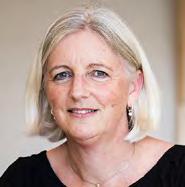
ITAXATION
> BY ANDREA SCATCHARD
Andrea Scatchard is a Tax Partner at Deloitte, based in the Bay of Plenty. She can be contacted on ascatchard@deloitte.co.nz
s removing GST from food a possible solution to the costof-living issue? In short, yes, but it may be a blunt tool in a toolbox with sharper options. While it would certainly make some difference, typically such changes provide the greatest dollar benefit to the highest earning households.
What would it cost?
GST makes up a significant portion of the total tax collected by Inland Revenue, with GST revenue from food and drink estimated to be around $2.6 billion in 2018 (or around 15% of total GST collected) according to the Tax Working Group.
In summary, the removal of GST on food is unlikely to be an efficient method of reducing the cost of food for the individuals and households that need help the most.”
How would we determine what items of food should be exempt from GST?
If the financial impact of removing GST from all food and drink is too great, should we consider only removing GST from “healthy foods” such as bread, eggs, milk, fruit, and vegetables? While there may be some merit to this, it gives rise to interpretative issues. For example, if milk is to be exempted, what about milk powder or alternatives to milk? If fruit is exempted, what about fresh fruit juices, canned fruits, frozen fruit, or fruit spreads?
As with any potential changes to the tax mix, if there were to be a cut in the total amount of GST being collected, then the Government would have to cut Government spending, raise or collect more taxes in other ways, or borrow more. There is no free lunch and we might not like the alternatives.
Experience in other jurisdictions shows that this can result in arbitrary and blurred lines between what is subject to tax and what isn’t.
In the UK we’ve seen cases to determine whether a Jaffa Cake is a biscuit or a cake, or whether a Pringle is a potato chip. In Ireland the courts have had to consider whether Subway uses ‘bread’ (spoiler alert – it does not – there is too much sugar for the buns to be considered a staple and exempt from VAT).
A current private member’s bill by Rawiri Waititi proposes to remove GST from all food and non-alcoholic beverages. While this in theory is easier from a classification perspective, there are still potential issues – ‘food’ is defined consistently with the Food Act 2004, which is wide in interpretation. Additionally, it only

removes GST from sales to consumers so would potentially exclude supplies to the likes of restaurants or dairy owners. This could result in supermarkets needing the ability to determine whether a customer is a consumer (no GST), or whether they’re a café/ restaurant working picking up extra milk or eggs (subject to GST).
Who would benefit the most from GST being removed from food?
GST is seen as a regressive tax, which means it has a greater impact on lower income households.
The Tax Working Group noted in 2018 that expenditure on food and drink represented
approximately 20% of the weekly household expenditure of a decile 1 household compared to 14% for a decile 10 household.
While removing GST from food benefits all households, it would have a much greater dollar benefit on rich households who spend more money on food (even though it is a smaller percentage of their spending).
Given this, it needs to be considered if more targeted tools could be used to result in a more efficient outcome at a lower overall cost to the Government.
For example, the recent cost of living package announced by the Government will provide targeted financial support to approximately 1.4 million
Kiwis to help offset cost of living increases. This package has a total cost of $311 million, a fraction of the likely cost of removing GST on food. Overseas experience also shows us that removing 15% GST from items of food would not necessarily translate to a 15% reduction in the price to consumers. For example, when the UK removed VAT on tampons there was an overall decrease in cost of 1-1.5%, but the applicable VAT rate was 5%.
In summary, while the removal of GST on food would be great for GST specialists and accountants, it is unlikely to be an efficient method of reducing the cost of food for the individuals and households that need help the most.
Bleak weather punishes events organisers to the tune of millions, while inflation stalks the future
A“In addition to our usual annual poll which tracks the pulse of the industry, we asked our members about the impact of the heavy weather, and the responses show it is severe,” she says. “Coming as this does on top of the recent yearslong restrictions in the Covid response, it’s safe to say it has been a harrowing time for the industry.”
One respondent noted, “Higher costs of living, higher interest rates, bad weather and continued waves of Covid make this environment one of the most challenging ever for NZ promoters.” Estimated by the respon-
s if the Covid response of lockdowns and restrictions imposed by the Government on the events industry wasn’t enough, recent severe weather events have dealt a further harsh blow to operators in the North Island. That’s emerged in recent research conducted by the New Zealand Events Association (NZEA), which shows organisers had to cancel nearly 300 events as a direct consequence of the Auckland floods and Cyclone Gabrielle. If not a knockout punch, it is undoubtly a bitter pill to swallow, says NZEA general manager Elaine Linnell. There’s another storm on the horizon, too, as organisers expect inflation and rising prices to impact their efforts in the near future.
dents, the financial losses run into the millions. “We have some individual operators reporting losses exceeding the $2million dollar mark, while others are well into the hundreds of thousands of dollars.
The combined losses are significant – but more than that, they represent the loss of the enormous effort that goes into organising an event, from securing and booking talent to arranging venues, catering, security, sound and lighting, and more. It is heartbreaking.”
Exacerbating the situation, Linnell says the NZEA research shows that most operators – nearly 80 percent –were not insured ahead of the late 2022 and early 2023 sum-
mer events season. The reasons for the absence of insurance are varied and led with a third saying insurance wouldn’t have covered the losses. Nearly 21 percent didn’t think insurance was necessary, while just over 17 percent said it was too expensive, and slightly over 10 percent said understanding policies was too difficult. Nearly 52 percent said they would consider insurance cover for weather related impacts on future events – while 48 percent said they would not.
“There may be a lesson in the losses our members have had to shoulder. Insurance might be costly, and especially for large events, it is necessarily complex. But in the case
of a complete washout, it provides some relief even if only partially covering costs.”
Looking ahead, event organisers foresee tough times.
One commented, “It is really tough out there. Most event businesses were crushed by Covid last year and the ones that did survive were looking forward to this summer season to make back losses, and the weather has just killed us.
At least with Covid you could apply for assistance and at least cover the costs of your staff.”
The poll confirms these fears are widespread. Nearly 75 percent of respondents indicated the biggest challenges in 2023 include increased costs to deliver events and a similar
cohort expecting fewer attendees. Just over 60 percent said funding is hard to come by, with sponsors and funders seeing events as too risky. Staff shortages are an issue for nearly 30 percent of respondents, and volunteers are in short supply for 35 percent of respondents.
While the NZEA continues advocating for and advancing the issues facing the industry, Linnell says there is something every New Zealander can do, too. “Events are part of the rich tapestry of life. They aren’t just economic generators; they bring excitement, fun and cultural growth into our lives. Buy a ticket, go and see a show, get out there and support our events professionals.”
TAURANGA-BASED QUENTOSITY GROUP GROWS WITH ACQUISITION OF NZ AGENCY MANTIS DIGITAL
The Quentosity Group has strengthened its presence in the New Zealand digital sector with the acquisition of Auckland based Mantis Digital. The acquisition sees website design and development agency Mantis join The Quentosity Group’s stable of digital brands that include online directory Localist, SEO agency Found, digital consultancy Quentosity, team
management tool Checkliso and queue-jumping software Bumpzi.
In announcing the move, Quentin van Heerden, Managing Director of The Quentosity Group, said he was delighted with the acquisition of such a highly regarded agency in New Zealand.
He said the purchase would increase The Quentosity Group’s website design and development capacity and
add to its current service suite that also includes SEO, app and software development, CRM solutions, social media management, and both content writing and content production.
“Mantis Digital has an exceptional portfolio of work and an outstanding team that are the best at what they do,” says van Heerden.
“We are thrilled to be able to offer all our customers expanded capabilities as a
result of this recent acquisition and look forward to working with our existing and new customers as they come on board.”
Mantis Digital Managing Director Garth Nicholls said that “passing on the reins was not an easy decision, and we carefully chose The Quentosity Group to steward Mantis' future”.
He thanked Mantis’ clients for their support over the years, adding that with The Quentos-
ity Group “you are in the same good hands!”
The Quentosity Group is based in Papamoa, with clients across New Zealand and overseas. Its digital consultancy Quentosity has won multiple awards. It is also the first digital agency in New Zealand to be awarded the Accessibility Tick. Quentosity is also the agency behind the Q Awards, the annual contest for young creatives in the Western Bay.
Mantis’ head office will remain in Auckland, with the Tauranga satellite office relocating to The Quentosity Group’s home at the Q Building. “These are really exciting times for The Quentosity Group,” says van Heerden.
“We’re always looking at ways to help our clients grow and look forward to supporting Mantis’ amazing clients with our wide range of digital services.”
Growing unicorns – NZ’s changing start-up and VC landscape
By PHIL TAYLOR –PARTNER, TOMPKINS WAKE
Entrepreneurs may be the commercial heart of New Zealand, with the start-up sector poised for hockey stick growth, but by international comparison, we still have a long way to go.
Thanks to our ability to bootstrap ideas and disrupt stagnant industries, New Zealand has witnessed some remarkable success stories in the last five years.
Some starts-up have gained unicorn status by surpassing the market capitalisation mark of $1 billion dollars with a few possibly reaching dragon status – surpassing $1B in a single raise. These include Predict HQ, Timely, ArchiPro, AllBirds, Harmoney, Red Shield, Petlife, Soul Machines, Hnry, Crimson Education, Vend, Vital, Xero, Unleashed and Rocket Lab.
But compared to other countries, such as the US, Germany, the UK, Australia, Israel, and India, NZ is still in an emergent phase when it comes to how we support, fund, and develop new commercial ventures.
New Zealand hasn’t seen the enormous wealth from successful start-ups that many of those countries have enjoyed over the last 20 years.
So how can New Zealand foster new commercial ventures better and create more unicorns?
What’s holding us back?
• The Downturn – The current economic downturn is driving venture capitalists to cautiousness and conservatism. We have seen an end to the ‘easy money’ and the seemingly limitless supply of readily available capital of the last few years.
The New Zealand start-up sector is well-positioned for significant growth, but there are now likely to be more checks and balances before an investment is made.
The onus is on start-ups to get their house in order and demonstrate why they stand out from the crowd. People and emotions will play key roles in investors’ decision making, so getting the right advice is crucial. Fortunately, there is a wealth of accessible and affordable help now available.
• Experience and awareness –Many early-stage companies don’t have a firm grasp on how the VC process works or how to attract the right investors, particularly during seed, series A, series B, and series C funding rounds.
We have an opportunity to grow founders’ awareness of venture capital and private equity by making it easy and affordable for them to access information, support, and advice.
• Misconception – We also need to challenge some of the preconceptions and ste-
reotypes people hold about venture capitalists and demonstrate the valuable role investors play in helping entrepreneurs and our economy.
Gone are the days when investors were out to beat founders down, and exercise control as quickly as possible. To be successful in venture capital today, investors understand the need to be a founder-friendly partner who can invest, incubate, and incentivise their entrepreneurial partner.
However, more recently, we have seen the balance swing back slightly towards investors. Venture capitalists recognise that terms need to be favourable for all parties. They understand the need to preserve incentives for founders, typically through a healthy shareholding.
• Attitude – A lack of ambitious aspiration also hamstrings many Kiwi entrepreneurs. Many are quite happy to sell out for $20-30 million, buy their bach, boat and Ford Ranger ute and retire early. You must be pretty extraordinary to be the leader of a billion-dollar unicorn.
But the reality is many institutional VC investors aren’t looking for a start-up that will just do well. They want unicorns.
Market growth & maturity
Despite all the challenges, now is the perfect time to establish
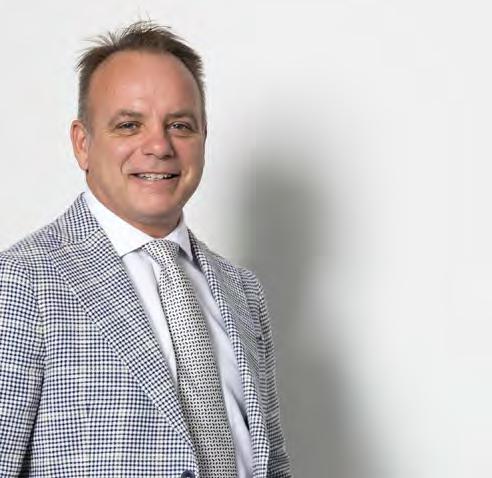
a start-up. The venture capital landscape has changed over the last four to five years, influenced by growth in the number of venture capital funds and increasing maturity in the market. And it’s been good news for start-ups.
In 2002, the New Zealand Government issued funds through New Zealand Growth Capital Partners NZGCP, making $300 million available to the start-up market. This was a real tonic for the sector and made it easier for start-ups to find investor money in New Zealand, rather than looking offshore. Today, we have more than 65 active funds, which has seen investment in the start-up market grow by more than five
You must be pretty extraordinary to be the leader of a billion-dollar unicorn.”
appreciate the benefits of their previous experiences, particularly during tough times.
The need for ‘Smart Money’
While venture capitalists are looking for the right start-up, entrepreneurs also need to make sure they’re partnering with the right VC. We call it ‘smart money’, and it is largely about being satisfied with the following three things:
• Knowledge & connections: VCs with a deep knowledge of their particular sector. Think of someone who can facilitate connections with suppliers, help recruit the talent the business needs, and offer structured training and support.
times over the last 20 years.
NZGCP’s funds gave the market time to grow and mature to the point where it is now self-supporting. The influx of international funds that have come into New Zealand combined with investment by homegrown funds demonstrates the durability of our start-up ecosystem. Our talent and innovation will continue to be drawcards for foreign VCs, as will our high education standards and ‘no corruption’ status.
We have seen several large venture capital funds mature from a typical initial size of say $10 million fund size to up to $250 million. They now have cash to reinvest and
• Deep pockets: VCs with deep pockets and the ability to help with follow-on funding. This could be through their own fund or other funds they can tap into. As we head further into an economic downturn, start-ups will need larger cheques at later stages, and funds to tide them over to the next round.
• People first approach: VCs who know how to put people first and can help avoid founder burnout. Successful VCs understand the importance of putting people first. Forget the accounting and finance metrics. It’s all about the people – looking after them is not just the right thing to do, it’s good business.

PhilTaylor
Out of time?
HOW TO SOLVE YOUR TALENT SHORTAGE CRISIS

MINING BUSINESS WEALTH
> BY FREDDIE BENNETT
Guinness World Record Holder, podcast host and bestselling author, Freddie is known as ‘The Profit Hunter’. He helps business owners enjoy more time, money and freedom by discovering and extracting hidden profits in their companies. Freddie@conqueryourmedia.com
Many hands make light work. Not very helpful advice for thousands of short-handed Kiwi businesses who feel trapped under a low-capacity ceiling. However, there is a surprising solution for leaders who are bold enough to think differently.
Success in business is straightforward. Not easy, but straightforward.
Business owners need to get from where they are now, to where they need to be –ideally in the most direct way possible.
Now you might accuse me of pretending business success is easier than finding a parking spot at The Mount on a Saturday afternoon in January, but it’s true.
Leaders also learn an uncomfortable fact of business and life – when you add other people into your company, then the problems (and the dramas) start to add up.
Many of my clients say to me, “we are stretched waferthin by a skills shortage”, and then in the next breath they proclaim, “I really should do some of that staff training ‘stuff’, but I’ve just been too busy”.
Ah yes, the ‘b-word’. You’d have these talent gaps filled and skills shortages sewn up… if only you weren’t so ‘busy’. I have some uncomfortable news for you. You don’t have a skills shortage, a talent crisis or a capacity problem … you just have a bunch of decisions that you’re too scared to make. A problem vs a decision
You don’t have a ‘problem employee’ – you’re refusing to make and communicate a decision about their performance.
You don’t have a ‘capacity

problem’ – you’re not making a decision about boundaries and saying ‘NO’. You don’t have a ‘talent shortage problem’ – rather than treating the recruitment of talent as a 365-days-a-year top business priority, you decided to only start searching for a replacement once the previous employee was halfway out of the door.
Note (just to prove my ‘tough love’ point), you don’t have a ‘weight problem’, you’re just deciding to put the wrong foods in your mouth. Make different decisions, and the problem goes away.
My slightly crazy exploits of hot-footing it across the Sahara Desert, becoming a
Guinness World Record holder and running 160-km ultramarathons non-stop mean I am often invited to speak to businesses who have a ‘motivation problem’.
But using motivation to ‘rally the troops’ will not fix your talent problem. Motivation is a short-term sugar rush that feels good for a day then leaves you feeling empty.
I should know, I tried to ‘motivate’ myself off the couch, the booze and the drugs for years, and I can say with some authority that ‘motivation’ alone is about as impactful as adding yet another traffic cone to Cameron Road.
What will fix your talent problem is a bold decision, fol-
Michelangelo (a very busy man) had a block of marble. But he took a chisel to it. He removed 80% of what existed. But what remained was the statue, David – a timeless, priceless masterpiece.
lowed by bold action, followed by the courage of your convictions to keep taking the same action time and time again.
The action you must take? … Well, you might not like it….
A key takeaway
The self-styled gurus of the business world will proclaim the answer to your talent conundrum is more productivity, and better time management.
After all, how else would they create the mental bandwidth to write all those painful LinkedIn articles? I must admit, I prefer to spend my time having fun and making
money, but each to their own.
A talent and capacity shortage – by the definition of the word ‘shortage’ – leads us to believe something is missing.
So, what do we do? We shovel more work into our agendas in a fruitless attempt to fill the gaps: to-do lists, complicated prioritisation activities, weird and wonderful triage approaches and ‘do it later’ piles.
At this point, things become emotional. We deliberate, weigh-up pros and cons, and allow ourselves to be sucked into the draining, black hole of ‘tough choices’ – deciding which tasks should be allowed to live another day.
So much time wasted; so much emotional currency used up. And you wonder why you feel overwhelmed.
Multiply this feeling by each team member, every single day. As if by magic, you’ve created a highly talented sub-industry that’s busily devoted to deciding what tasks to accomplish today, due to the fact that everyone is so damn busy.
The solution? Do the opposite.
Don’t add. Remove.
Think of your time (and your talent) like a rough block of marble, dug out from the ground. If you keep excavating chunks of marble, all you’ve created is a heavy, messy, expensive pile of rubble.
Michelangelo (a very busy man) had a block of marble. But he took a chisel to it. He
removed 80% of what existed. But what remained was the statue, David – a timeless, priceless masterpiece.
Create your masterpiece
A fruitless search for ‘more’ will not fix your talent shortage crisis.
Capability problems can only be solved with a decision of ‘less’.
You and your team are only ‘too busy’ because you refuse to say ‘NO’ to distractions, time-wasters, deliberation, people-pleasing and procrastination.
Remove your limiting beliefs. Stop putting things off that you don’t ‘feel like’ doing. Chisel away all thoughts about kicking that project a little further down the road until it lands in the big, scary realm of ‘the future’.
Teach your team that ACTION is the answer. There is no ‘triage’, no ‘to-do-list’, no “I’ll see if I get round to it this week”… you have only two options: now or never. If your talent adopts this approach, exciting things happen. They move out of ‘crisis’ and into ‘creation’.
If you want to create an amazing team, running an amazing business, focus on creating an amazing day. Today.
The best way to predict the future is to create it. Or waste another week listening to the time management gurus. Your decision.
Global thinking supports local causes
As this edition rolls off the press, I am somewhere between Paihia and Invercargill in a classic mini in the Pork Pie Charity Run. This biennial event raises funds for charity and the 2023 event will again be supporting the wonderful and incredibly important work of KidsCan New Zealand.
Before we rolled out of Paihia, we had raised over $30,000 for Kids Can. A significant proportion of these generous donations have been from franchise systems, franchisees and businesses associated with the franchise sector. We cannot thank them enough!
In 2019 I wrote Use the force for good – https://bopbusinessnews.co.nz/franchising/use-the-force-for-good/ addressing the misconception that franchises are purely big business, highlighting franchising as a significant force of social good. The collective power of mostly small-tomedium businesses provides social support ranging from creating employment through to direct donations and support of a huge variety of social causes. The Franchising New Zealand 2021 survey provides an excellent insight into the size of the sector’s social contributions. An estimated 590
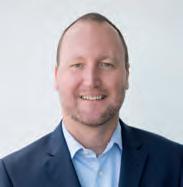
FRANCHISING
> BY NATHAN BONNEY
Nathan Bonney is a director of Iridium Partners. He can be reached at nathan@iridium.net.nz or 0275-393-022
franchise brands operating in New Zealand operate an estimated 32,357 business units. In addition to employing over 156,000 people and generating revenues of an estimated $58 billion, community support is significant.
The survey data identified the median value contributed by franchise brands to community support and sponsorships was $30 000 per year. This figure was up by 46% from the 2017 survey, “highlighting higher levels of community support among franchises. 90% of franchise brands return profits back to
the community. While franchise brands contribute a median of $30 000 a year to the community, 62% of the franchise brands contribute more than $20 000 per year.”
That adds up to approximately $18 million in contributions to the community.
Closer to home in the Bay of Plenty
Auckland is home to the majority of franchise support offices, but Tauranga is a growing regional hotspot with at least nine franchise brands based here.
One of those brands is Exceed Franchising. They have a fantastic record of supporting local causes including being behind the efforts to have defibrillators placed on Mauao.
For our Pork Pie Charity Run campaign Exceed were behind the challenge to get other franchises to support KidsCan as well as donations from both the corporate office and franchisees.
Others such as The Coffee Club and BurgerFuel have a long history of supporting KidsCan and VIP Home Services and Streetwise Coffee have

the Pork Pie Charity Run many times. Most of the brands that have supported our campaign and made donations have fran-
operating in the Bay of Plenty. So,
MattWoodley (left) and Nathan Bonney with their Mini –currently somewhere between Paihia and Invercargill.
NEW APPOINTMENTS
BBN’S GUIDE TO NEW PEOPLE AND NEW ROLES ACROSS BUSINESS IN THE BAY To feature in New Appointments email us at new.appointments@bopbusinessnews.co.nz
New appointments bode well for the Bay
The local community can be encouraged by the announcement of a number of new appointments this month, from the legal profession to business support, the arts and civic project stewardship.
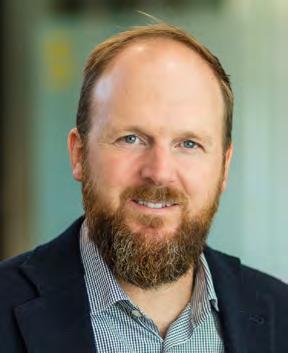
Montie Baskett
Montie Baskett recently joined Holland Beckett Law as a consultant in the Corporate & Finance team.
Montie has more than 20 years of experience in construction contracts, energy, infrastructure and property development projects, investment structuring, joint ventures and outsourcing, capital raising and corporate governance.
Prior to joining Holland Beckett Law, Montie held senior in-house legal and risk management roles in the electricity, construction and property development industries.
Earlier in his career Montie held senior positions in Buddle Findlay and Russell McVeagh in Auckland.

Sonya Korohina
The Tauranga Art Gallery Trust (TAGT) is delighted to announce the appointment of Sonya Korohina (Ngāti Porou / Pākēha) as the new Director of the Tauranga Art Gallery (TAG).
Sonya has held roles at leading arts institutions Artspace Aotearoa, Auckland Art Gallery, Elam School of Fine Arts, and Toi Ohomai where she developed the Creative Entrepreneur Programme in the Bachelor of Creative Industries.
Sonya grew up in Tauranga Moana and returned to the city with her family a decade ago. She is delighted to be taking the helm of such a vital civic organisation at such a pivotal time for the city and the wider Bay of Plenty.
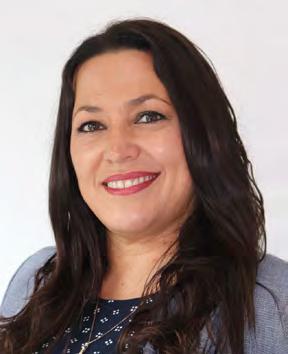
Toni Stanaway
EMA is thrilled to have Toni join their team of HR/ER experts as HR business consultant. She brings a wealth of knowledge and skills with over 20 years HR and senior leadership experience working across sectors and industries, both here in NZ and abroad.
Toni is known for being highly creative, intuitive, and strategic. She enjoys helping businesses navigate their biggest challenges; and building high performing teams. Toni has a track record in developing performance driven solutions that are practical, scalable, innovative and people centred. No matter the size or nature of your business (or need), Toni will help you succeed.
NEW PARTNERS APPOINTED TO HOLLAND BECKETT
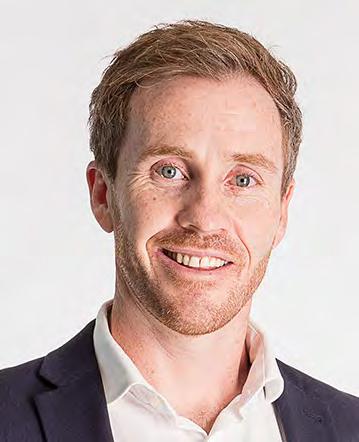
Joel Murphy
Joel joined Holland Beckett in 2019 after returning from the United Kingdom, working as an in-house counsel for one of the world’s largest large scale solar developers. He has 12 years of legal experience and, prior to his experience in the United Kingdom, he worked at Meredith Connell in Auckland.
Joel advises clients on all aspects of property, including acquisitions and disposals, leasing, developments, financing and subdivisions. He has particular expertise in solar farms, kiwifruit orchards and residential developments. Joel is an advocate for the growth of the Bay of Plenty and is a committee member of the Central Regional Committee for Property Council New Zealand.
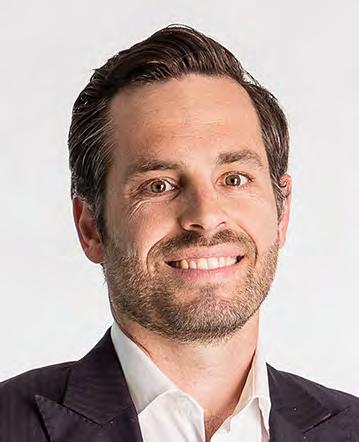
Jeremy Sparrow
In 2012, Jeremy joined Holland Beckett as a graduate and is the first law clerk to partner.
Jeremy started in the wider litigation department, where he acted on some of the firms major cases including businesses affected by the Rena sinking.
Jeremy then spent two years working as a lawyer in London. Upon his return to the Bay of Plenty, Jeremy has developed into a specialist employment lawyer.
Jeremy has grown a substantial employment practice and continues to be sought after by clients for his effective and practical advice: this is from some of the firm’s biggest clients to the smallest.

Key appointments set civic precinct up for future success
Three key appointments relating to Tauranga’s civic precinct have been confirmed, helping to set the once-in-a-generation development up for future success.
From 31 March 2023, local resident and experienced director Kim Wallace will take on the position of Board Chair, while the similarly-experienced Barry Bragg will join the CCO as a Board Director. These decisions follow last week’s appointment of Greg McManus to the role of Director of Museums.
Kim Wallace, Chair
Kim Wallace is a resident of Tauranga Moana. She has had an executive career in finance, complemented with full time governance appointments over the past 10 years.
Since 2018 Kim has been the Independent Chair of the Audit and Risk Management Committee Risk Committee for Christchurch City Council. She is also currently Deputy Chair of AgResearch Limited and an Independent Director of Port Nelson Limited and Origin Capital Partners.
In addition, Kim is Chair of several Project Steering Committees charged with the oversight of significantly large and complex Crown-funded construction projects. These include the new $97 million AgResearch Lincoln building, $1 billion State Highway 2 projects between Waihi and Tauranga, and the $870 million South Auckland (Drury) projects.
Kim was also a part-time governance advisor to Waka Kotahi – New Zealand Transport Agency and KiwiRail for five years, advising on the $1.5 billion North Canterbury road and rail reinstatement project.
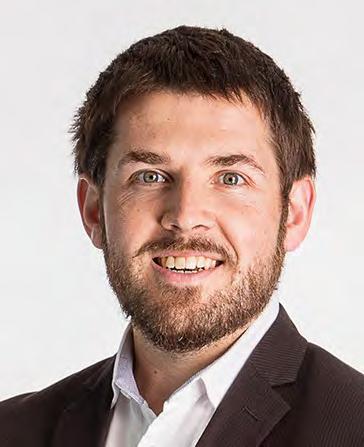
Tim Conder
Tim Conder was a Judges’ clerk at the Auckland High Court before joining Holland Beckett Law in 2016.
During his time with the firm, Tim has driven the creation of a specialist public and local government team within the firm, that serves both local government and private clients.
He has particular experience defending regulatory charges –including environmental, health and safety, animal welfare and export related offences.
Tim is an experienced Courtroom advocate, who has appeared in civil cases, appeals and on both sides of criminal prosecutions in the District Court, High Court and Court of Appeal.
Barry Bragg, Director
Barry Bragg is currently Chair of Te Kaha Project Delivery Limited, a council-controlled organisation set up to independently govern the design and construction of the $683 million Te Kaha multi-use arena in Christchurch, reporting to Treasury under the Crown funding agreement.
Barry is also current Chair of Pegasus Health Limited, the largest Primary Health Network in the South Island, and current Chair of Paenga Kupenga Limited, a subsidiary of Ngāi Tahu’s investment arm Te Ngāi Tūāhuriri Rūnanga, supporting the delivery of social outcomes.
Other governance roles include current Chair of Quarry Capital Limited, Deputy Chair of Stevenson Group Limited and Director of Christchurch City Holdings Limited.
Of Ngāi Tahu, Whānau a Apanui and Whakatōhea descent, Barry has previous executive experience working for various energy and telecommunications organisations across New Zealand.
Greg McManus, Director of Museums
Greg recently completed a 10-year term as CEO of Waitangi National Trust, leading the development of two significant new museums from concept to completion and operation: Te Kōngahu Museum of Waitangi and Te Rau Aroha Museum of the Price of Citizenship.
He led the transformation of Waitangi Treaty Grounds into a world class visitor destination, securing the financial sustainability of the organisation and enhancing the mana of the site as the most important historic place in Aotearoa New Zealand.
Prior to Waitangi, Greg was Director of Rotorua Museum Te Whare Taonga o Te Arawa for 15 years, leading a capital construction programme that completed the famous Bathhouse building to its original 1912 plans and transforming the museum into one of the most awarded visitor attractions in New Zealand.

Hard times – we’re banking on them!

THAVE YOU EVER NOTICED?
> BY ALAN NEBEN
Alan Neben is a Mount Maunganui local and experienced New Zealand publisher. His columns provide a light-hearted perspective on social changes effecting New Zealanders.
here has been outrage recently about the excessively high level of bank profits in New Zealand.
The average Kiwi possibly wouldn’t be so perturbed if the main banks were New Zealand-owned. Personally I’ve never been particularly discerning when unearthing the country of origin of my assailant when I’ve been mugged or scammed – whether it be a neighbour, or a total stranger from another town – if they steal my hard-earned money I feel violated, irrespective of their provenance.
Not that I’m suggesting there’s any ‘mugging’ or ‘scamming’ taking place in the banking sector – perish the thought!
It’s just there’s always a feeling that your money’s being ‘taken’, you get no say in it, the amounts change regularly, the scammers are all in on the fix, they change the rules constantly whenever ‘they’ decide, you can’t get out of the game and you’re com-
pletely *****d without them.
Sound familiar? Welcome to the world of New Zealand banking (any similarities to mafia protection rackets are purely coincidental).
“I’m gonna make him an offer he can’t refuse.”
What Marlon Brando’s character Vito Corleone is really saying to Johnny Fontaine in The Godfather is what I like to term ‘bank talk’: you can’t say ‘no, cos we won’t let you.
Our free-market rules prescribe the players are not allowed to collude – no discussing and agreeing things like rates and margins with competitors – that’s a ‘no no.’
But the day bank W changes its one-year mortgage rate, purely by coincidence its competitor banks A and A and B choose to change their rates by virtually the exact same amount. Strange eh?
Of course you can always change banks … yeah, right! … have you ever tried changing banks? Be very afraid.
“We’re here to help,” never really seems to ring true until you add the postscript, “provided you’ve got security by way of property as collateral that we will insist you back-up with a personal guarantee.”
I’m not keen on the business model that enables the ‘family’ to invent random new charges with indecipherable names like ‘processing validation fee’ and ‘batch transaction fee’, that are added to customer statements every month or two; if the clients object and don’t pay on time, cumulative penalties are then also added.
It is of no real consolation that there is a helpline with a minimum two-hour ‘priority’ queue to sooth clients by assuring them there is, “absolutely nothing we can do about the new charges”, but then politely ask, “is there anything else I can help you with today [other than the first thing which I didn’t help you with]?”
It can be disconcerting to realise there is no longer a local manager to speak to,
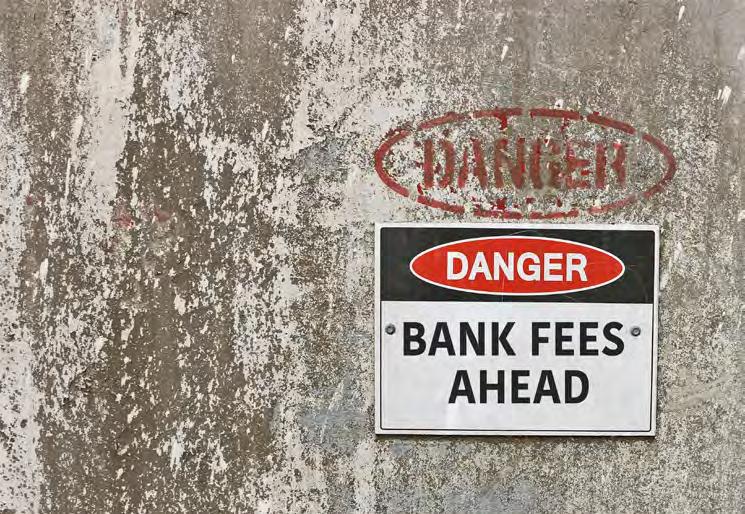
because there is no longer a local branch and the advice is to check the FAQ section on the website or wait on hold for a couple of hours and speak to the helpdesk gentleman in Mumbai (who coincidentally sounds just like the Microsoft guy who called me yesterday to check my credit card details).
A year ago I had a rant about banks in this column. I commented, “no-one works at the bank anymore since they went online.”
Which led me to ask: “If
they no longer have to pay the bank teller wages, and they don’t need the armed courier driver (cos cash is now extinct, except for buying sausages at Bunnings on the weekend), and they don’t have to rent the retail space for the closed bank branch, and they’ve eliminated the accompanying cost of providing customer carparks and re-stocking the pens on chains that don’t work, then why have they not only not reduced my bank charges, but instead introduced additional new transaction charges for
the jobs now done by less than minimum wage logarithms at the back end of their online banking app? … [breathe]
The reason my bank has not reduced my bank charges: “because they don’t have to.”
As I said a year ago, “there’s a lot of extra profit going straight to Melbourne, not passing go, but still collecting $200, even though they already own Park Lane and Mayfair.”
It reminds me of a boardgame – I wish I could remember the name.

Careful recruitment is essential
Recruitment is a critical component of any organisation’s success, and it can be costly if done poorly. With the ever-present talent shortage, poor recruitment practices are becoming increasingly common, with businesses racing to put bums on seats rather than quality candidates. This can have a significant impact on businesses’ bottom lines. From inefficient hiring processes to inadequate training and high turnover rates, the cost of poor recruitment is something that businesses cannot afford to ignore.
One of the primary costs of poor recruitment is the direct financial cost. Recruiting, hiring and training new employees is an expensive process, and when it is not done correctly, it can lead to wasted time and resources.
This includes the cost of advertising job vacancies, screening and interviewing candidates, background checks, IT set up costs and the time of training the new employee into the position.
It all adds up and isn’t a cost to take lightly or one that is wanted to be repeated due to not getting it right.

One of the key concerns of recruitment is the impact on current employee morale and productivity – when an organisation hires the wrong person, this can lead to increased stress and workload for existing employees who must compensate for the new hire’s deficiencies.
HUMAN RESOURCES
> BY KELLIE
HAMLETT
Talent ID are Recruitment Specialists and can support you through your recruitment process. Please feel free to talk to us about this by calling 07 349 1081 or emailing kellie@talentid.co.nz
The Harvard Business Review states that 80% of employee turnover is due to bad hiring decisions. Poor recruitment can create a toxic work environment and affect overall company culture.
Psychometric testing is a vital tool in understanding a person’s potential and personality and can be a really useful tool in the recruitment process, helping to assess candidate suitability for the role requirements and the team fit.
It can help to identify strengths and weaknesses
within the team and any potential gaps which could be filled with your new recruit.
Talent ID are accredited Saville Psychometric Assessors and can arrange for this to be completed on behalf of any employer.
There is a common misconception that psychometrics are only used for high level roles, however they are a useful tool across all levels of any organisation, and can be very cost effective if you choose the right one.
Many businesses are under pressure to fill roles quickly,
and as a result, they may not invest enough time in the recruitment process. This can lead to poor screening, hiring the wrong candidates, and poor fit with the culture.
Businesses must invest in creating effective recruitment strategies. This includes investing in training and development, offering competitive salaries and benefits, and providing opportunities for career advancement. It is also essential to conduct thorough screening and background checks.
Your critical compliance, as
we call it, is another check to ensure that your new recruit is suited to the role.
Utilising HR and recruitment consultants who are trained in this area can ensure that the recruitment process is sounder and can take the pressure off the urgency of the recruitment, as well as ensuring the candidates are well vetted.
Another reason for poor recruitment is the lack of investment in training and development. Many companies are not providing adequate training and onboarding, leading to new hires struggling to adapt to their new roles. Inadequate training can lead to mistakes, poor customer service, and decreased productivity, which ultimately affects the company’s bottom line.
In addition to the direct financial and productivity costs, poor recruitment can
also damage a company’s reputation.
In today’s age of social media and online reviews, negative feedback from past employees or candidates can quickly spread, making it challenging for companies to attract and retain top talent.
Having a strong recruitment process and HR strategy can have significant financial, productivity, and reputational value for businesses.
Addressing these issues requires investment in effective recruitment strategies, training and development, and a commitment to hiring the right candidates. By doing so, businesses can create a positive work environment, retain top talent, and ultimately increase their bottom line.
Get in touch with Kellie and the team at Talent ID to discuss any of your recruitment and HR needs.
SMALL OFFICE SUITES AVAILABLE TO LEASE




Tralee St, Omokoroa
Be part of the growing Omokoroa community! The Village is focused on providing a much-needed town centre experience and amenity for local Omokoroa residents and visitors to enjoy.
Premium retail, medical, office and hospitality spaces are available for lease or purchase.
Completion of the
& professional services and
hubs expected in Q3, 2023.


Hospitality Hub
Fast Retail Hub
